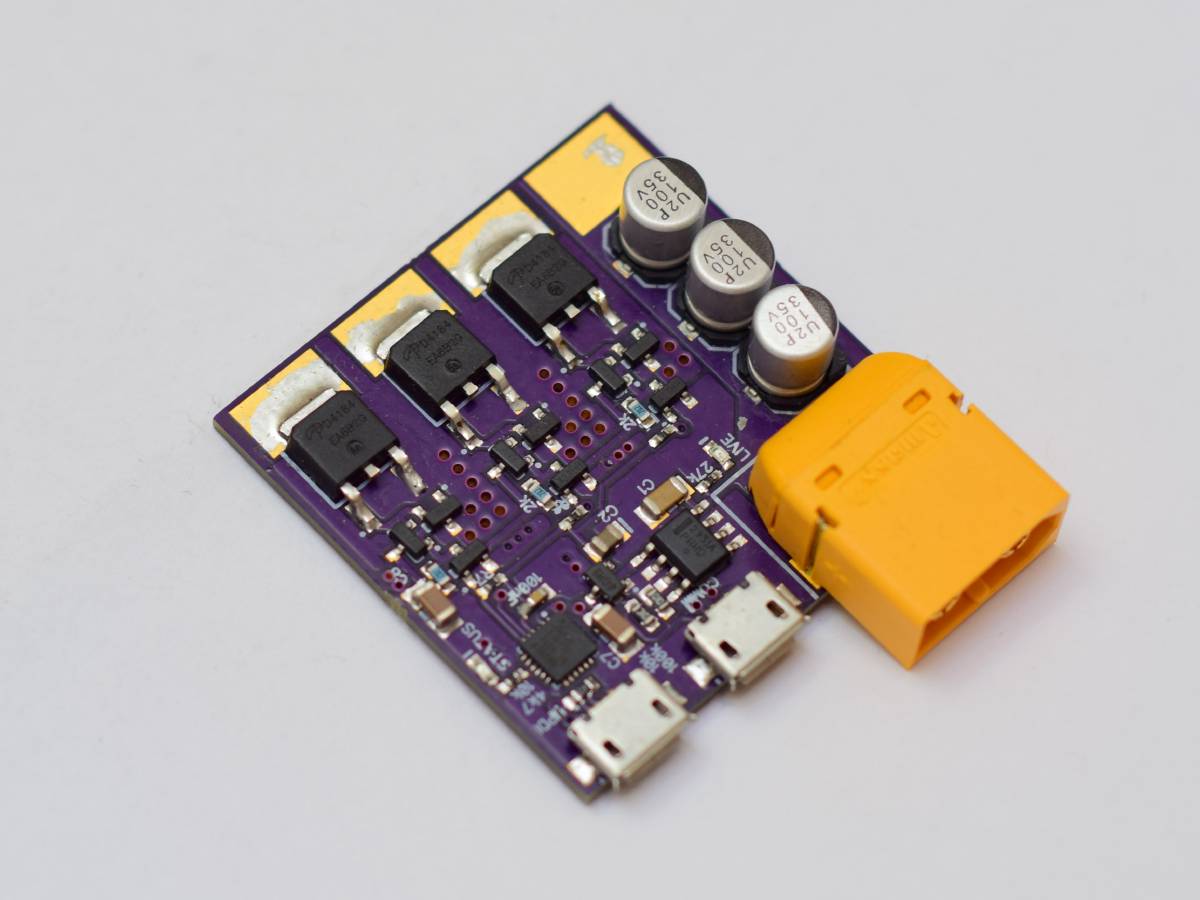Smartfet
Mar 5, 2018Smartfet is a small, self-contained module designed to abstract away the complexity of high-power switching. It's designed as a simple answer to the question, “how can I modulate power to this beefy load?”
For me, that load is mostly high-density LEDs, but “smartfet” could also be a motor controller with some modification.

This board accepts commands over a simple text-based protocol, with UART as the PHY. Three open-drain NMOS channels can be controlled in this way, with all the vagaries of pulse-width modulation and high-current gate drive handled by a dedicated AVR microcontroller. The FETs are large, so we use a totem-pole gate driver implemented in discrete BJTs to deliver fast turn-on and off times. A small RC snubber mitigates gate ringing, and the layout minimizes loop area of the switching nodes. Ceramic and electrolytic capacitors together
It is sometimes difficult to work all the above features into an existing design, which is why Smartfet tries to offer a separation of concerns here. As a standalone submodule, it does one thing well: low-side switching. All application semantics are left to higher layers of abstraction.